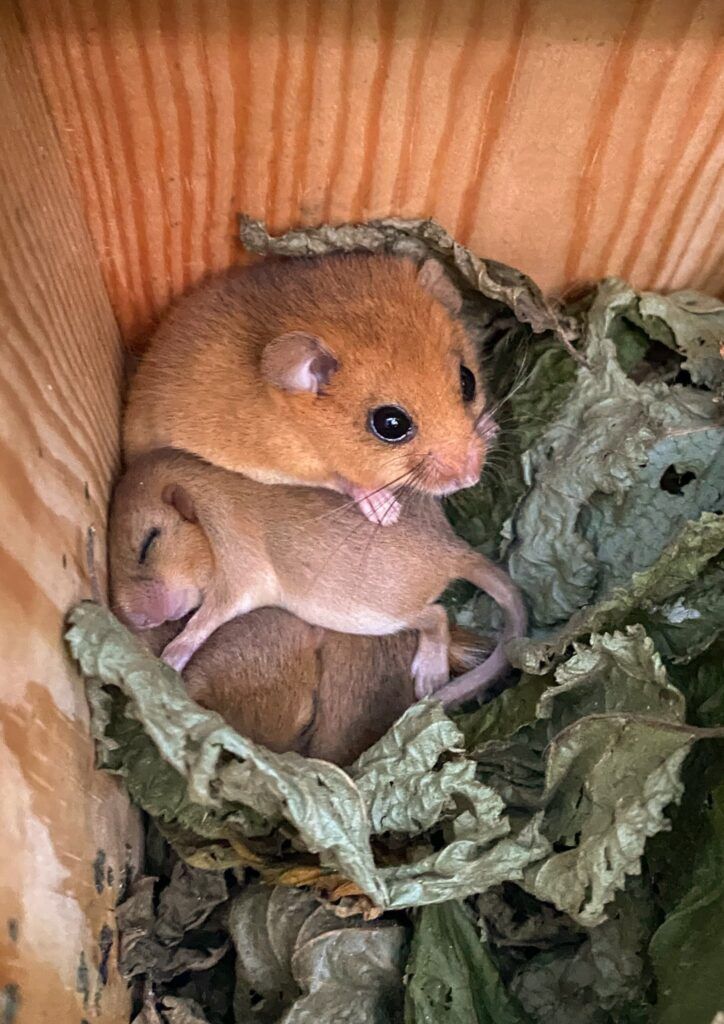Bid to boost declining dormouse population at National Trust Calke Abbey
This week, 38 rare hazel dormice are being reintroduced into a woodland at the National Trust Calke Abbey estate in Derbyshire, in the heart of the National Forest, in an attempt to save this endangered species from further extinction in the UK.
The golden-coated, bright-eyed dormice will be released into a large, secluded woodland on the Calke Abbey estate as part of ongoing conservation efforts to return hazel dormice to areas where the tiny mammals are locally extinct.
Despite once being a common feature of the UK’s woodlands, hazel dormouse numbers have plummeted in recent years due to habitat loss and fragmentation, and climate change. Our State of Britain’s Dormice 2019 reported nationwide populations declined by a staggering 51% since 2000 and dormice are considered extinct in 17 English counties. With the help of many partners, we release healthy, captive bred dormice every year into well managed woodlands across the country to try and combat this decline. Since the programme began in 1993, we’re pleased to say that 1,078 dormice have been reintroduced to 25 different woodlands in 13 counties.
National Forest will welcome new residents
Part of Natural England’s Species Recovery Programme, we’ve been leaders on the annual reintroductions since 2000. But the ongoing success is the result of a unique partnership of several organisations including the Common Dormouse Captive Breeders Group including Wildwood Trust, Paignton Zoo and ZSL, and many passionate volunteers who together work tirelessly to help us bring dormice back from the brink and ensure their ongoing survival.
Well-managed woodlands and hedgerows are key to restoring dormouse populations across the UK, so releasing dormice into such habitats is crucial for the species’ long-term recovery. The National Forest is home to a huge array of woodlands so we hope that this is the first of many reintroductions to take place in this part of the country.
The National Trust has been custodian of this ancient woodland since 1985, and over that time they’ve sympathetically managed the landscape so that it supports an array of native wildlife. This diverse woodland, which is home to oak, hazel and honeysuckle, will provide lots of secure places for dormice to forage and nest. With the help of volunteers, the team will monitor the reintroduced population over the coming months and years to ensure they remain healthy, and in time, the dormice will hopefully breed and disperse into nearby woodlands to create a self-sustaining wider population.
High hopes for dormouse dispersal
All dormice released are captive bred by the Wildwood Trust, a member of the Common Dormouse Captive Breeders Group, before they undergo a eight-week quarantine and receive full health-checks by expert wildlife vets at Paignton Zoo and ZSL’s Disease Risk Analysis and Health Surveillance (DRAHS) team. Regular health screening ensures that only healthy dormice are released into the wild, and the dormice harbour only native parasite species of importance to biodiversity, both of which are vital in mitigating against disease.
After reintroduction day, the dormice are left to quietly acclimatise to their new surroundings from the safety of their nest boxes, which are gently placed within larger mesh cages filled with foliage, food and water. Local volunteers will top up their food and water daily, and after 10 days, and a further health examination, the mesh cage doors are opened to allow the dormice to explore their new home. When the dormice no longer use the mesh cages, they will be removed, leaving the dormice to live freely in the woodland. Slowly the dormouse population will increase and in time they will start to disperse to new woodland and hedge areas.

You can donate to this long term project or find out more about our dormouse conservation work here:

